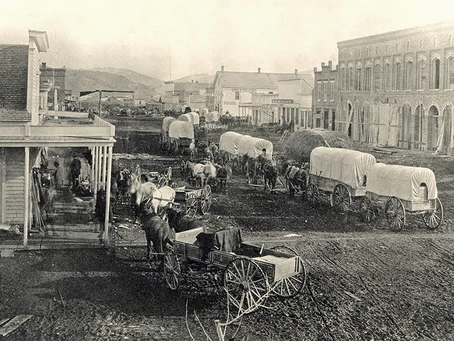Bozeman has many amazing things and sights to offer. Gallatin Valley and the surrounding areas place the landscape with various outdoor activities that change with the seasons. The city also caters to art, dining, and cultural interests.
In August 1854, Bozeman was named after the town’s key founder and the Bozeman Trail founder, John M. Bozeman. The city later changed to its current city commission/city manager government form in January 1922 after it was incorporated in 1883. It was selected as an All-American City by the National Civic League in 2001. Bozeman, as a college town, is home to the popular Montana State University. The Bozeman Yellowstone International Airport served the city and the Bozeman Daily Chronicle is the local newspaper.
Captain William Clark survey the area and led ten men through the Gallatin River from Three Forks during the return trip of the Corps of Discovery to the East. The group camped 4.8 km (3 miles) east at the Kelly Canyon’s mouth, today’s Bozeman location. The general area is described in the notes of Captain Clark titled the “Valley of the Flowers” as they went on to pass over Bozeman Pass on July 15, 1806.
John Jacobs and John Bozeman scouted for a direct route from the line of Oregon Trails to Montana’s Virginia City’s gold mines down central Wyoming in 1863. The entire route was reportedly pioneered by Allen Hurlbut in 1864, pursuing the paths of Native Americans and parts of trails made by Jim Bridger in the same year. Native Americans consistently raided explorers on the route by which the Army of the U.S. government was ordered to execute a military campaign targeting the Shoshone during 1864 and 1866. The Bozeman Trail was closed during the Red Cloud’s War in 1868 however, the fertile land of the town enticed permanent settlers.
On November 8, 1889, President Benjamin Harrison proclaimed Montana as the 41st state accepted into the Union. The first location of the territorial capital was in Bannack City and later changed to Virginia City, however in 1875 it was switched to Helena. During the second statehood attempt in the 1880s, various towns contended to become the state capitol including Bozeman.
A fish hatchery at the Bridger Canyon’s entrance on Bridger Creek was established by the U.S. Bureau of Fisheries in 1892. The Unites States’ 4th oldest fish hatchery concluded as the 1966’s hatchery and became the Bozeman National Fish Hatchery of the U.S. Fish and Wildlife Service. The facility was later converted into a fish health and fish technology center. The facility receives around 5000 yearly visitors observing working biologists on feed manufacturing technology, water quality improvement, fish diseases, diet testing, and broodstock development.
In 1893, Bozeman’s Montana State University was established as the land-grant college of the state. Later it was called the Agricultural College of the State of Montana, then named the Montana State College in the 1920s. It soon became the Montana State University in 1965.
Bozeman acquires a steady inflow of visitors and new residents resulting from its numerous recreational activities like hiking, mountain climbing, whitewater kayaking, and fly fishing. Moreover, the city is a gateway community by which visitors come through on the way to the thermal features and abundant wildlife of the Yellowstone National Park.


